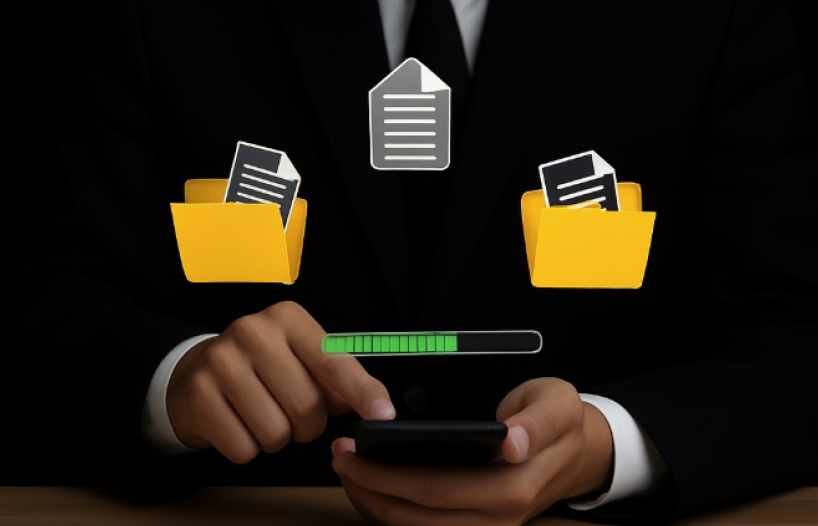
Why Trade Shows Are Still Relevant in the Digital Age
In a world where business runs almost entirely on Zoom, LinkedIn, and digital campaigns, trade shows remain the one arena where you can create personal, face-to-face connections with prospects, partners, investors, and journalists.
Recent reports state that more than 80% of attendees have buying authority, and nearly two-thirds of marketers rate trade shows among their top lead-generation channels.
In just two to four days, you can meet dozens of decision-makers, the kind of outreach that might take months via emails or cold calls. Trade shows combine sales, marketing, PR, and investor relations in one place, giving brands a shortcut to visibility and trust.
What Makes a Trade Show Truly Impactful?
It’s not the size of your booth or how many branded gadgets you hand out. Real impact starts with strategic thinking. Leading companies define clear business goals well in advance:
- Are you launching a new product?
- Building a sales pipeline?
- Seeking investment?
- Positioning your brand as an industry leader?
- Expand your market reach through media?
When your objectives are clear, you can measure success on multiple fronts: potential deals, press coverage, new partnerships, and even new doors opened with funds and investors.
Defining Clear Goals & KPIs
Every successful trade show begins with clarity. Decide what success looks like: net-new leads, product demos, partner introductions, or media exposure. Translate those goals into measurable KPIs such as qualified conversations, scheduled meetings, or demo sign-ups. Document these targets and align your team so everyone knows the priorities.
Presenting Complex Technology in an Engaging Way
Even the most sophisticated tech can be simple and exciting when presented through immersive, interactive experiences. Live demos, hands-on stations, and tailored use cases allow visitors to experience innovation firsthand – turning curiosity into belief.
Examples from the field:
- NRF “Ice Cream” Booth – Instead of a standard stand, we offered our our client, an AI company, to showcase its product offering through an ice cream bar with different flavors. The message: just like ice cream, there’s no need to settle for a generic model – personalization is key. This playful concept left a lasting impression on customers, journalists, and investors alike.
- Cybersecurity Wall Climb – To escape the clichés of dark screens, shields, and binary code, we created a daring campaign for a cybersecurity company with the tagline: “Taking risks?, not with your OT Security.” Their booth featured a climbing wall, translating the idea into an engaging experience that extended to their website, landing pages, and LinkedIn posts.
- HR Tech Graffiti Wall – To challenge overused HR slogans (“retention” or “work is family”), we built a graffiti wall with bold stickers that reframed employees as people first. The installation sparked meaningful conversations and drew significant attention.
- Travel Tech Airport Theme – For a travel-tech client, we designed a booth that looked like an airport, complete with “flight attendants,” boarding passes, passport stamps, airplane snacks, and giveaways – all creating a memorable journey for attendees.
Pre-Show: The Work That Drives Results
Most companies rely on random foot traffic. The best ones know the magic begins weeks before the event:
- Identify your target audience precisely
- Launch personalized LinkedIn and email campaigns
- Send VIP invitations to potential prospects or investors
- Arrange private dinners
- Reach out to editors and journalists offering an interview and a product demo.
This ensures you arrive at the show with a fully booked calendar rather than relying on chance encounters.
Audience Targeting & Content
Define buyer personas and research the attendee list to prioritize high-value prospects. Warm them up with teaser videos, social posts, or invitations for product demos. Consider collaborating with partners exhibiting also at the show to present your shared solution and extend your reach and credibility.
Apply for a Speaking Opportunity
One of the fastest ways to elevate your presence at a trade show is to secure a spot on the conference agenda. Speaking sessions position your brand as an authority and draw high-value prospects directly to you. Research the call-for-papers or speaker application deadlines early as many close months before the show. Propose topics that educate rather than sell, and highlight your team’s unique insight or data. Once accepted, promote your session in pre-show emails and social posts to drive attendance.
Designing an Engaging Booth Experience
Your booth is more than a backdrop; it’s your brand in three dimensions. Clear messaging and bold visuals should communicate value within seconds. Add interactive elements such as; touchscreens, product samples, or AR/VR demos to spark curiosity.
Staff & On-Floor Execution and Lead Capture
Even the best booth can’t compensate for unprepared staff. Equip your team with clear messaging, product stories, and qualification questions. Use badge scanners, QR codes, or apps to log details with quick notes about interests or needs. Categorize leads (hot, warm, nurture) so sales can prioritize outreach after the show. If you have a CRM system like HubSpot, you can synch the data daily, so no prospects get lost.
Post-Show: Where the Real Work Begins
Finishing an event with nothing but a stack of business cards wastes valuable momentum. Companies that immediately feed all leads into their CRM maximize impact.
Segment leads by interest, design tailored nurture journeys within 24 hours, and reuse event content (videos, decks, posts) to keep engagement alive. Done right, a trade show can continue yielding results – in leads, media, and investor visibility for months after it ends.
Measuring Success & Continuous Improvement
Go beyond headcounts. Track KPIs such as qualified leads, meetings booked, deals influenced, press mentions, or website traffic spikes. Calculate cost per lead and estimate revenue to assess ROI. Collect feedback from staff and attendees about booth design, messaging, or product-market fit. Use these insights to refine goals and tactics so each event delivers greater impact.
The Golden Rule: Think Growth, Not Just Expense
Approach every trade show as a strategic growth engine, not a one-off marketing cost.
With careful planning, a sharp narrative, unforgettable experiences, and smart post-event management, three-four days on the floor can translate into a full year of multidimensional business growth.
Looking for upcoming opportunities to put these ideas into action?
Explore our Event Hub for tradeshows in your industry.




